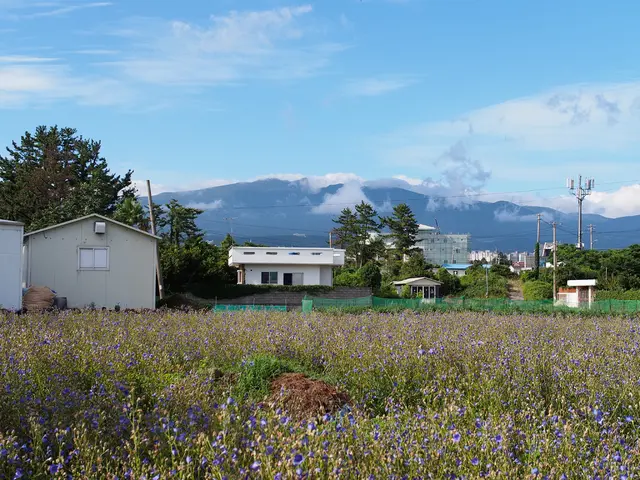Palm Oil Plantations and Malaysia's Biodiversity: A Tangled Web
Palm Oil Expansion's Effect on Malaysia's Biological Diversity
The lush landscapes of Malaysia, brimming with life, are undergoing a drastic change due to the booming palm oil industry. Although this crop plays a pivotal role in the global economy, its production has a dark side – posing severe threats to the diverse ecosystems that thrive in Malaysia. Let's delve into how palm oil plantations impact the nation's biodiverse heartland, examining the challenges and potential solutions.
The Growing Reach of Palm Oil
Palm oil, found in countless everyday products, from snacks to cosmetics, has become a dominant commodity. Malaysia, along with Indonesia, contributes significantly to the world's supply, accounting for about 85%. The climatic conditions and soil that favor palm oil cultivation make Malaysia an ideal spot for plantations, causing extensive deforestation in the process.
Habitat Havoc
The most devastating consequence of palm oil plantations is the loss of vital habitats. Over the years, expanses of lush rainforest have vanished, forcing numerous wildlife species into the brink of extinction. Species such as the Malayan tiger, orangutans, and Bornean pygmy elephants face a grave threat as their homes vanish beneath the oil palms.
A Threat to Biodiversity Hotspots
Malaysia is a recognized biodiversity hotspot, teeming with a myriad of plant and animal species, many unique to the region. The transformation of rich and diverse forests into uniform plantations decimates the biodiversity, impacting both flora and fauna. This alteration disrupts ecological harmony and depletes genetic diversity, essential for resilience against diseases and environmental changes.
Indigenous Issues
The spread of palm oil plantations doesn't only affect wild creatures but also impacts indigenous communities who rely on the forests for their livelihoods. These communities often encounter difficulties accessing their traditional lands and resources, leading to disputes and social conflicts. The disruption of their age-old way of life raises questions about cultural preservation and social justice.
Soil and Water Issues
The cultivation methods used in palm oil farming often result in soil degradation and water pollution. The deforestation that leads to plantations results in soil erosion, while the usage of fertilizers and pesticides contaminates water sources. These harmful chemicals can have detrimental effects on both soil and local ecosystems, affecting both terrestrial and aquatic life.
Climate Concerns
The deforestation associated with palm oil plantations contributes significantly to carbon emissions, influencing global climate patterns. Peatlands, vast storehouses of carbon, are often drained and burned to make way for palm oil production, releasing substantial amounts of greenhouse gases.
Conservation Endeavors and Hurdles
To combat these environmental challenges, various conservation initiatives are underway. These include stricter regulations, sustainable certification, and the adoption of alternative farming practices. However, challenges such as enforcement and economic pressures remain formidable obstacles.
Economic Gains and Ecological Losses
The economic advantage of palm oil production cannot be ignored. It is a significant contributor to the country's economy, generating employment opportunities and contributing significantly to the GDP. Balancing economic prosperity with environmental sustainability is a complex puzzle that requires careful thought and innovative approaches.
Pursuing Sustainable Alternatives
One promising solution is the embrace of sustainable palm oil, certified by organizations like the Roundtable on Sustainable Palm Oil (RSPO). This certification promotes environmentally and socially responsible farming, ensuring that palm oil is produced without causing further harm to Malaysia's biodiversity.
Consumers' Role
Consumers play a crucial role by influencing market demand for sustainable products. By choosing products containing certified sustainable palm oil, they can motivate producers to adopt eco-friendly practices. Increasing consumer awareness is a powerful tool for steering demand toward responsible options.
Government Interventions
Governmental intervention is crucial in regulating the palm oil sector. Policies that encourage sustainable practices and discourage environmental degradation have the power to drive change. Effective land use planning and forest conservation laws are essential in safeguarding Malaysia's biodiversity.
A Hopeful Future: Balancing coexistence
The future of Malaysia's biodiversity amidst the palm oil expansion may seem uncertain, but a hopeful path forward exists. Through collective collaborative efforts among governments, industry, NGOs, and local communities, we can develop a pathway to coexistence. By aligning economic objectives with environmental conservation, we can pave a balanced way forward, ensuring that Malaysia's rich biodiversity endures for future generations.
In conclusion, palm oil plantations pose significant threats to Malaysia's diverse ecosystems and indigenous communities. Through sustainable practices, informed policymaking, and consumer awareness, it is possible to minimize these impacts and preserve the nation's biodiversity for posterity.
Adam Scott
Enrichment Data:
Overall:
Current Challenges
- Deforestation and Habitat Loss: Habitat loss is a severe consequence of palm oil plantations, primarily affecting threatened species like orangutans, proboscis monkeys, and Sumatran rhinoceroses.[1][2]
- Biodiversity Reduction: Monoculture palm oil plantations lead to a reduction in biodiversity, affecting both flora and fauna, and are responsible for the local extinction of many species.[1][2][5]
- Environmental Degradation: Degradation of soil and water resources is a significant issue associated with palm oil cultivation.[2][5]
- Indigenous Rights: Despite some improvements, concerns remain about the impact of palm oil plantations on the rights of indigenous communities, especially relating to land disputes.[4]
Potential Solutions
- Agroforestry Practices: Integrating native trees into palm oil plantations can enhance biodiversity while potentially boosting palm oil yields, creating a more sustainable ecosystem.[1][3]
- Sustainable Production Methods: Efforts to improve palm oil yields while minimizing environmental degradation involve investing in research and technology.[4]
- Biomass Utilization: Using palm oil biomass as a renewable energy source can replace coal, reducing carbon emissions and supporting sustainable practices.[3]
- Community Engagement and Policy Changes: Strengthening regulations, enforcing community engagement, and requiring free, prior, and informed consent are crucial for indigenous rights and environmental protection.[4]
- Palm oil, an integral part of numerous everyday products from food to cosmetics, is driving the deforestation of Malaysia's rich and diverse rainforests, leading to a significant reduction in biodiversity and putting threatened species such as the Malayan tiger, orangutans, and Bornean pygmy elephants at risk.
- The destruction of habitats due to palm oil plantations not only affects wildlife but also impacts indigenous communities who rely on these forests for their livelihoods, often leading to disputes and conflicts regarding access to traditional lands and resources.
- The cultivation and production methods of palm oil contribute to soil degradation, water pollution, and carbon emissions, which in turn impact the local ecosystems and contribute to climate change.
- To mitigate these environmental challenges, initiatives such as sustainable certification, stricter regulations, and alternative farming practices are being implemented, although obstacles like enforcement and economic pressures remain significant hurdles.
- As consumers have the power to influence market demand, choosing products containing certified sustainable palm oil can motivate producers to adopt eco-friendly practices, whereas governmental interventions like effective land use planning, forest conservation laws, and policies encouraging sustainable practices are vital in safeguarding Malaysia's biodiversity.
- To maintain a balance between economic prosperity and environmental sustainability, promoting sustainable alternatives like agroforestry practices, biomass utilization for renewable energy, and strengthening community engagement and policy changes can preserve Malaysia's biodiverse heartland for future generations.








